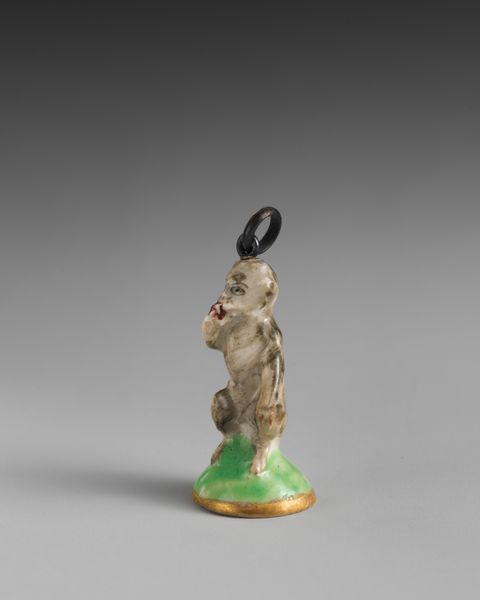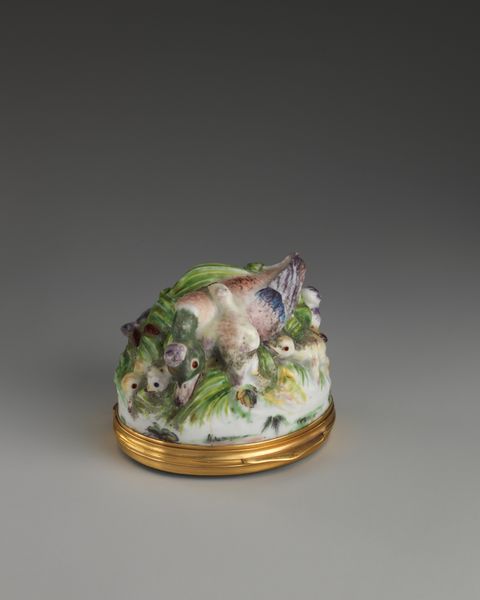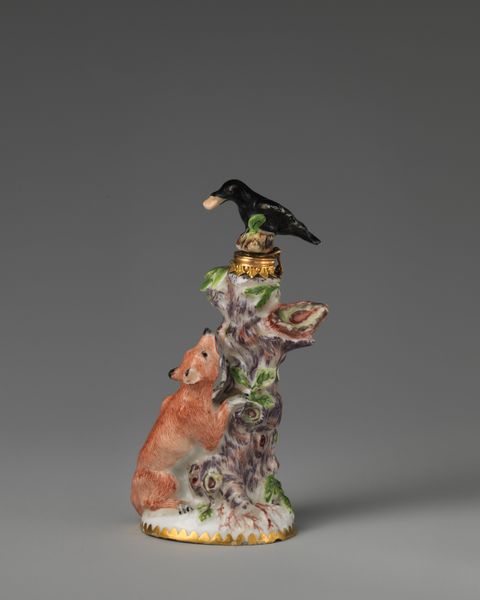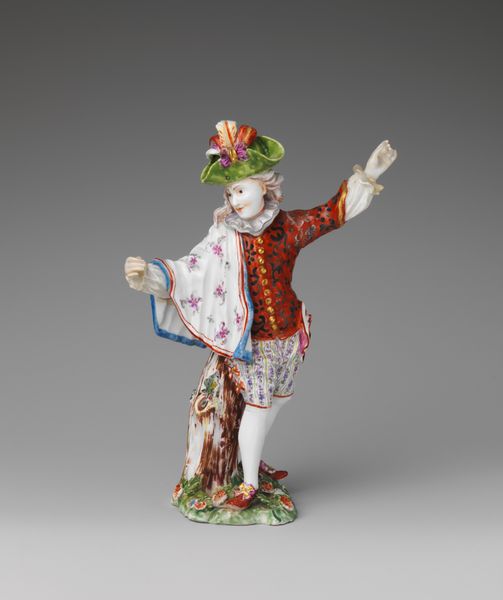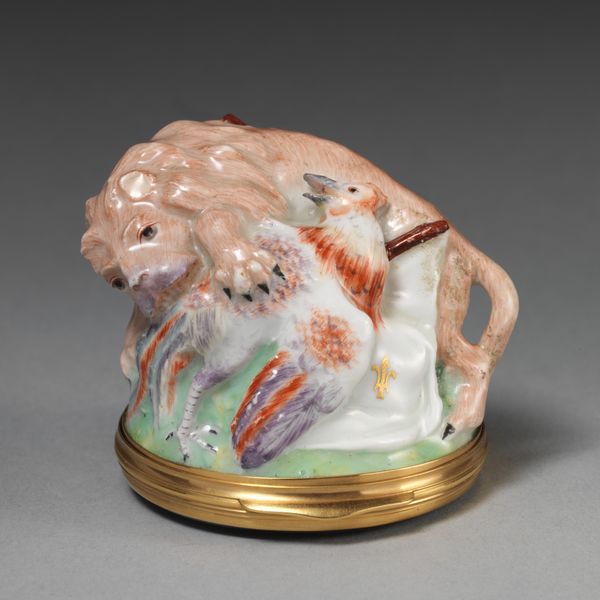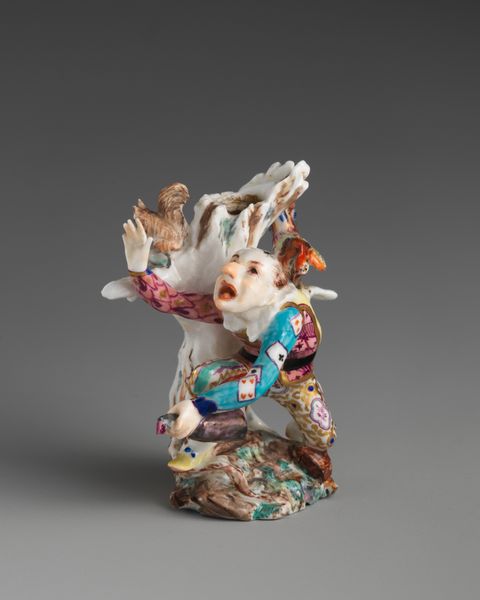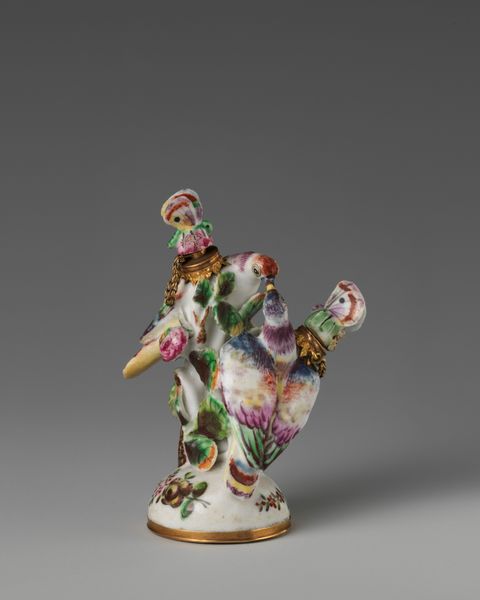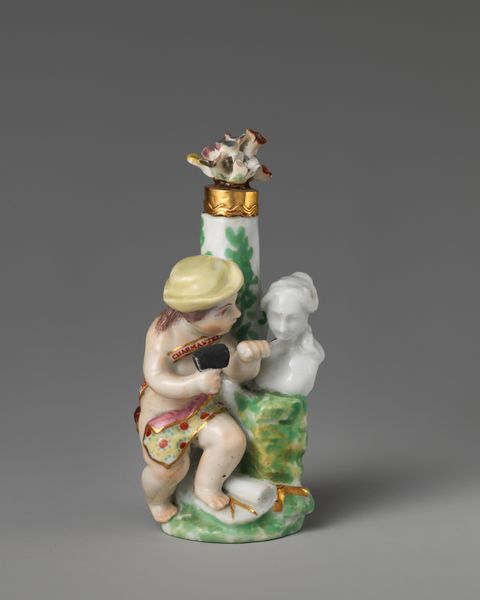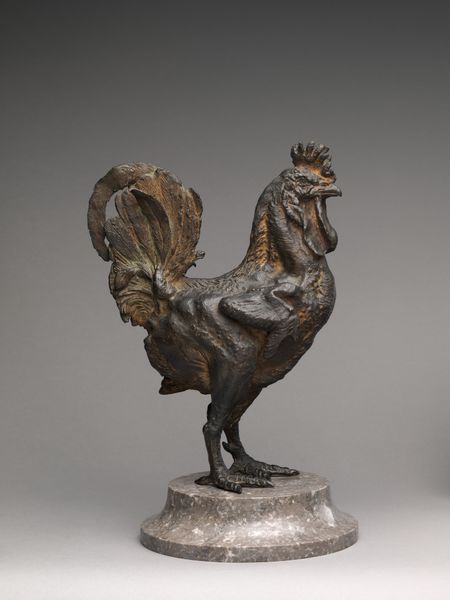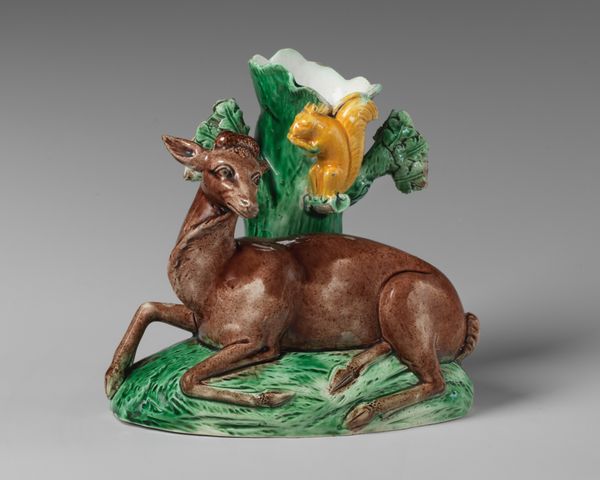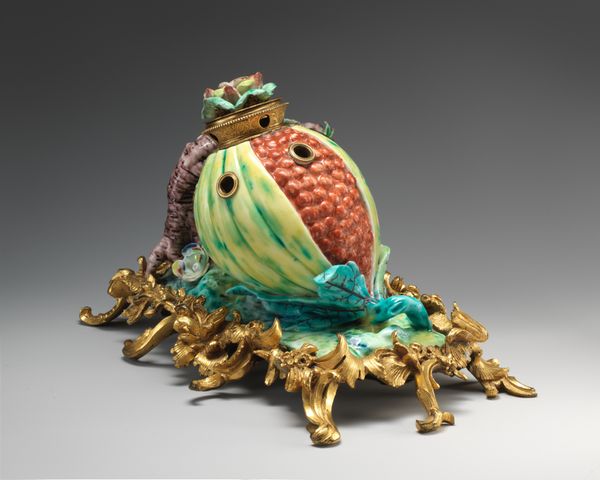
ceramic, porcelain, sculpture
#
animal
#
ceramic
#
porcelain
#
sculpture
#
decorative-art
Dimensions: Height (with stopper): 2 3/4 in. (7 cm)
Copyright: Public Domain
Curator: What a charming sculpture. This Scent Bottle, created between 1751 and 1761 by the Chelsea Porcelain Manufactory, offers a delightful snapshot of 18th-century artistry. It's crafted from porcelain and currently resides at the Metropolitan Museum of Art. Editor: My first impression? Utterly precious! The squirrel perched above the little fawn... it exudes a playful, almost theatrical charm. And such meticulous detail for something so small! What kind of cultural symbols are they channeling? Curator: Well, beyond pure ornamentation, squirrels in art have a history of representing diligence, foresight, and even thrift. This particular squirrel, adorned with what appears to be a gilded collar, hints at domestication, fitting within the aristocratic taste for the exotic and the tamed. The inclusion of the deer is interesting; It could refer to ideas of beauty, innocence and natural world. This really speaks to the era's fascination with re-imagining nature. Editor: Fascinating! I am wondering, what does this particular kind of presentation suggests? Perhaps it’s reflecting societal control over the natural world. Curator: Absolutely. The act of shaping and molding porcelain, an imported luxury at the time, is already an act of control and manipulation. When you then present idealized versions of these animals, devoid of any raw or threatening qualities, it reinforces existing power structures. Notice the glaze that coats it, that could indicate wealth and prestige. Editor: It's amazing how a seemingly innocent piece of decorative art can be so loaded with social and political undercurrents. And scent bottles were luxury items so that makes perfect sense. I’m intrigued by the gold decoration. I wonder about the artisan and how it was experienced and its message received in the context of the day. Curator: Porcelain manufacture was a young and competitive field, seeking patronage from the elites. By aligning themselves with courtly tastes, works like this gained visibility and, ultimately, economic value, reinforcing hierarchies in the art world and in society at large. Editor: So this “Scent Bottle” goes beyond smelling pleasant—it served as a marker of privilege. Its charm holds a rather complicated history. Thank you! Curator: Indeed. A glimpse into the delightful, but often thorny, intersection of art, society, and power.
Comments
No comments
Be the first to comment and join the conversation on the ultimate creative platform.

